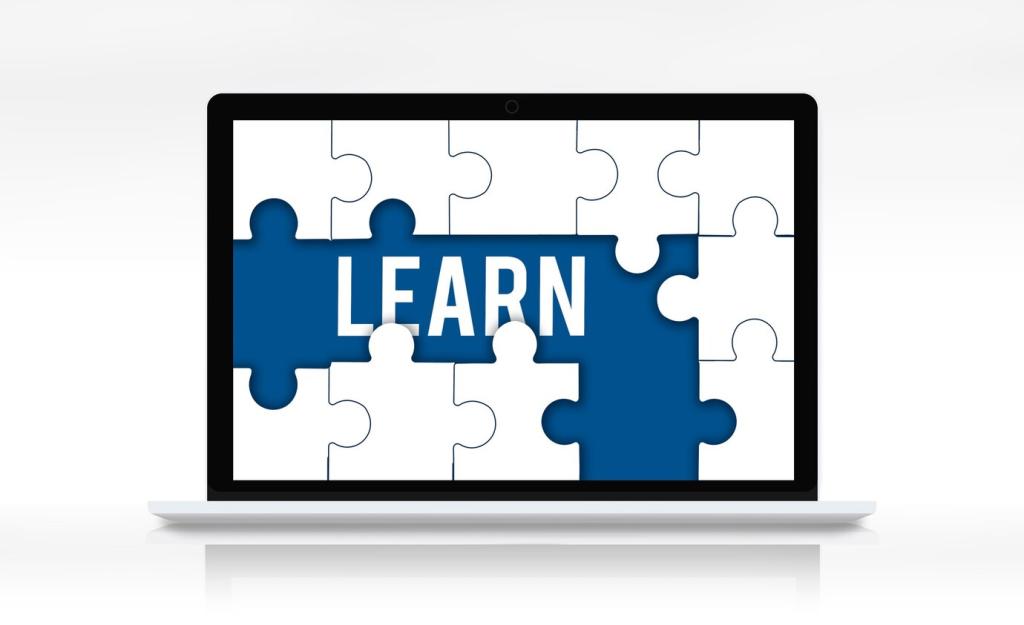Measuring Success in IT-Enhanced Classrooms
Chosen theme: Measuring Success in IT-Enhanced Classrooms. Let’s turn data into insight and insight into better learning—together. Join the conversation, share what you measure, and subscribe for practical tools that make technology’s impact visible, equitable, and enduring.

Setting a Shared Definition of Success

From Test Scores to Transferable Skills
Technology should elevate critical thinking, collaboration, creativity, and digital citizenship—not just raise scores. Define success as students applying knowledge in unfamiliar contexts, communicating with real audiences, and reflecting on process. Comment with one skill you believe signals meaningful, tech-enabled learning.

Co-Creating Metrics with Students
Invite learners to co-design rubrics that specify what success looks like in blended projects. When students help choose indicators—like clarity of argument, version history discipline, and feedback responsiveness—they own outcomes. Try it this week and share a rubric snapshot with the community.

A Classroom Story: The Dashboard That Changed Monday Mornings
Ms. Rivera began each Monday with a five-minute dashboard check—assignment progress, discussion depth, and revision streaks. The ritual reframed goals from grades to growth. Students celebrated streaks of feedback-giving. She invites you: what Monday metric would kickstart reflection in your class?
Triangulating Data Sources
Blend platform analytics, classroom observations, and student artifacts. A click count alone misleads; paired with rubric scores and reflection notes, it reveals patterns worth acting on. Post your favorite trio of measures and how it changed a teaching decision last month.
Low-Friction Formative Checks
Use one-minute exit tickets, quick polls, and auto-graded concept checks to keep learning currents visible. Small, frequent pulses guide timely pivots. Share an example of a micro-assessment that helped you adjust instruction the very next period.
Avoiding Vanity Metrics
Not every colorful chart matters. Time-on-task without context, or badge counts without rigor, can distract. Ask, “What action will this metric enable?” If none, drop it. Comment with one metric you retired—and what you replaced it with.



Equity, Access, and Inclusion as Core Measures
Detecting Access Gaps Early
Disaggregate data by device type, connectivity, language, and accommodation status. Look for late submissions clustering by access constraints. Provide offline options and loaner devices. Tell us one change you made after spotting an access pattern in your classroom data.
Universal Design Indicators
Track the percentage of materials with captions, alt text, flexible timing, and multiple representation modes. As accessibility rises, so does participation. Set quarterly targets and celebrate progress publicly. What universal design indicator are you committing to improve this month?
Culturally Responsive Outcomes
Measure relevance: student-chosen topics, local community ties, and representation within examples. When learners see themselves in the work, persistence grows. Share a project where technology helped honor culture and identity, and describe one metric that captured its impact.
Teacher Growth and Instructional Impact
Log the frequency of feedback cycles, student talk time, and adaptive grouping triggered by data. Compare before and after introducing new tools. Invite a colleague to co-analyze patterns. Post a small tweak that led to outsized learning gains.
Teacher Growth and Instructional Impact
After PD, measure classroom uptake: which strategies stuck, which fizzled, and why. Use short implementation checklists and quick student outcome snapshots. Share a PD idea that translated into measurable change, and tag a peer who helped you refine it.


Learning That Lasts: Transfer and Authentic Performance
Assign podcasts, data stories, or prototypes reviewed by real stakeholders. Track audience feedback quality, revision cycles, and post-presentation reflections. Share one authentic task you tried and the metric that best captured its real-world relevance.
Curate digital portfolios showing drafts, feedback, and final products across months. Score growth using consistent rubrics. Invite students to annotate their trajectories. Will you pilot a growth-focused portfolio and report your biggest surprise to our community?
Survey graduates about skill use in internships or jobs and track earned micro-credentials. Look for alignment between classroom outcomes and workplace demands. Share one alumni insight that is shaping your next unit design.

Minimal Data, Maximum Insight
Collect only what you need, store it securely, and prune regularly. Prioritize measures that drive action and fairness. Post your classroom’s data minimization pledge and invite students to improve it with you.
Transparent Algorithms and Bias Checks
Explain how recommendations are generated. Test for bias by subgroup and context. When issues appear, pause and adjust. Share one practice you use to audit tools, and ask vendors for clear model documentation before adoption.
Consent, Choice, and Student Agency
Offer opt-ins where possible, provide clear purposes, and show students their own data. Teach them to interpret dashboards critically. Invite learners to propose new metrics they value, and commit to piloting one this term.
